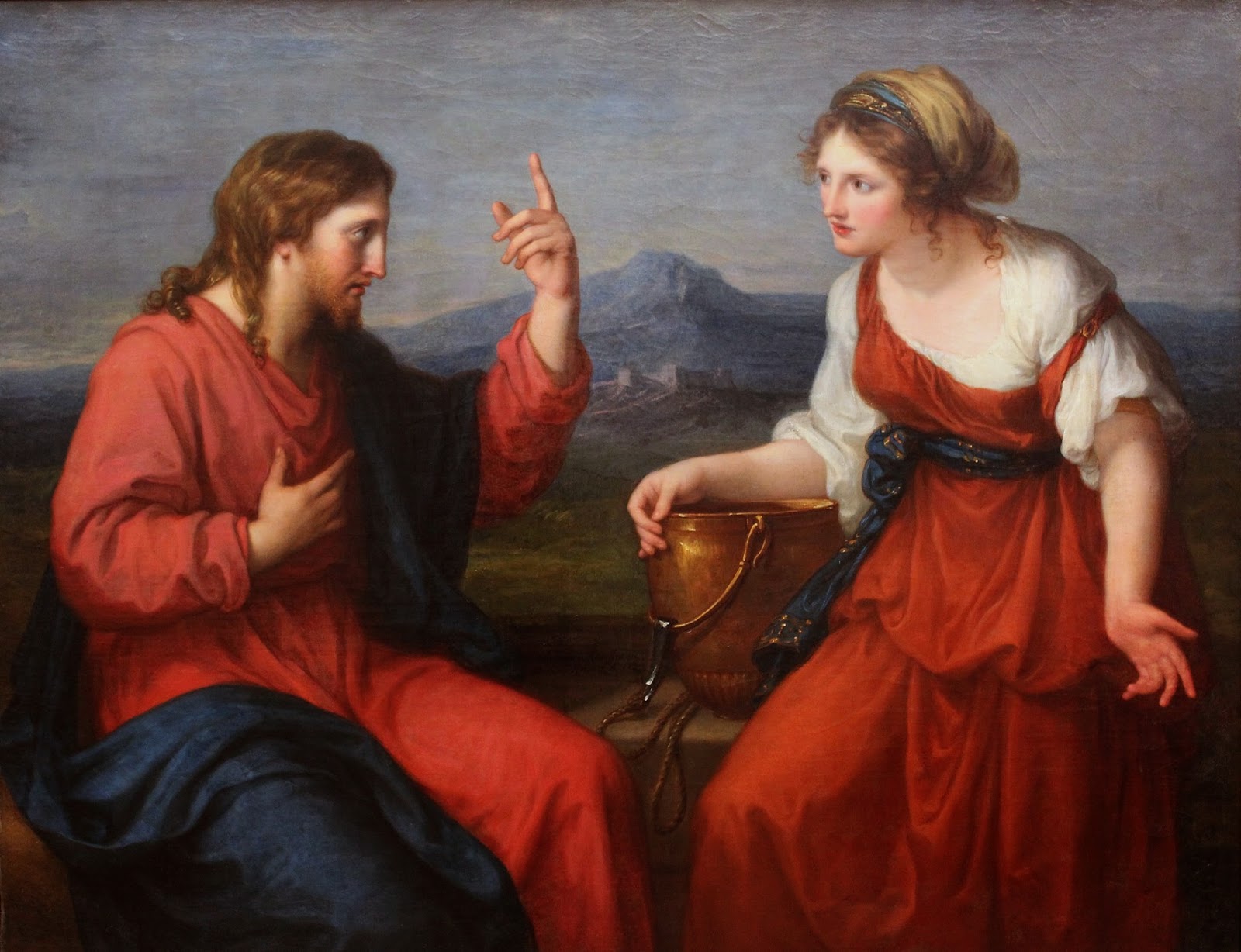These
five imaginative exercises were devised for those attending the quiet
mornings in St Hilda's Church in Lent 2015.
They
are meant to be followed in sequence:
2.
Strangers and Outsiders (this one)
4.
Power and Violence
5.
The Resurrected Jesus
The
framework for each exercise is the same. The sequence follows an
emotional path towards the cross and, through it, to the resurrected
Jesus.
An
imaginative path:
Please
note: this can be a heavy duty exercise. Don't go any
further or stay any longer than you are comfortable with. It's not
meant to be an ordeal but an opportunity for discovery.
Take
the break as advised. Have a proper break. Have a cup of tea (or your
preferred equivalent). Go for a walk. Distract yourself, and then
come back to pick up where you left off.
Don't
leave a section suddenly. Always leave on a positive note by saying
thank you, and politely excuse yourself before you turn to go.
It
is important that, in your imagination, you walk yourself from your
present surroundings and circumstances into the imagined setting –
and equally important that you walk yourself back out again at the
end. Take it steady: there is no rush.
And
if you do leave abruptly then
look at what it was that made you leave. Offer it in prayer.
2. Strangers and Outsiders
1.
The first step
Imagine
the landscape of Jesus' day (don't try to 'get it right')
Walk
into the place, carrying an empty bag
This
is a quiet, safe place, with no-one else around
Look
around and find a comfortable spot,
imagine
something as a landmark, and put your bag down
fill
the bag with all the everyday things you bring with you,
what
you're going to do when you leave here
what
you need to get on with later
conversations
you've had, or need to have
all
those things you ought to have done but haven't got around to
and
when you've filled the bag
 |
Angelika Kauffmann
Discourse between Jesus and
the Samaritan Woman at the Well
|
put
it down and leave it there. It will be safe.
2.
The first turn
Walk
a little way along a path, go round a corner
imagine you can see three or four people walking and talking
join the group. Look and listen;
Jesus is at the heart of the group.
There is a woman there who is a foreigner. She does not understand
the language. Someone is interpreting for her. What does the woman
want?
You too are a foreigner.
How
do you feel? An outsider? Not understanding?
Don't
say anything, just walk with them a while as a friend, as one of the
group
After
a little while.
Say
thank you, and politely take your leave and return to the spot where
you left your bag, and walk out of the place, back into the church.
TAKE
A BREAK
3.
The second step
Walk
back to the place you were in before, carrying your bag with you
remember:
this is a quiet, safe place, with no-one else around at the moment.
This
time, put more important things into your bag
People
– relationships,
fears,
hopes, anxieties
time
yourself
– who you are
(you
can come back to this spot at any time, everything will be safe)
Leave
the bag again, and set off around the same corner as before. It will
be safe.
4.
The second turn
When
you round the corner Jesus is sat there, a small man on his own,
waiting for you
Do
you sit or stand: you choose.
Listen,
look,
You come as an outsider, a foreigner, a stranger,
yet he knows you.
Say anything you like: and wait.
Do you need an interpreter? Someone who can make clear to Jesus what
you mean – someone who can make clear to you what Jesus says?
If so, wait little, someone will come along who can help.
Trust them.
Ask whatever you wish to ask
There may be an answer, there may not, just wait.
You are utterly safe, known, loved, protected
Wait, listen
But
don't stay too long; Jesus will wait for you.
 |
| Joseph-Marie Vien, Healing the royal official's son |
5.
The third step
When
it's time, when you're ready:
Say
goodbye properly, and thank him
Walk
back round the corner to where your bag is
Sit
beside it for a while,
reflect
on the experience of Jesus you've just had
reflect
on what it felt like to be a foreigner, an outsider
Take
a last look around and, when you're ready,
pick
up your bag and carry it with you as you
walk
back into the present
In
the present:
Unpack
your bag: in your imagination slowly take out all the important
things and re-assume them; then take out the less important things
and own them again. Cherish each item.
TAKE
A BREAK. Relax. Do something. Give yourself time to reflect on your
experience.
and
repeat if you wish.
Please
feel free to leave a comment.













